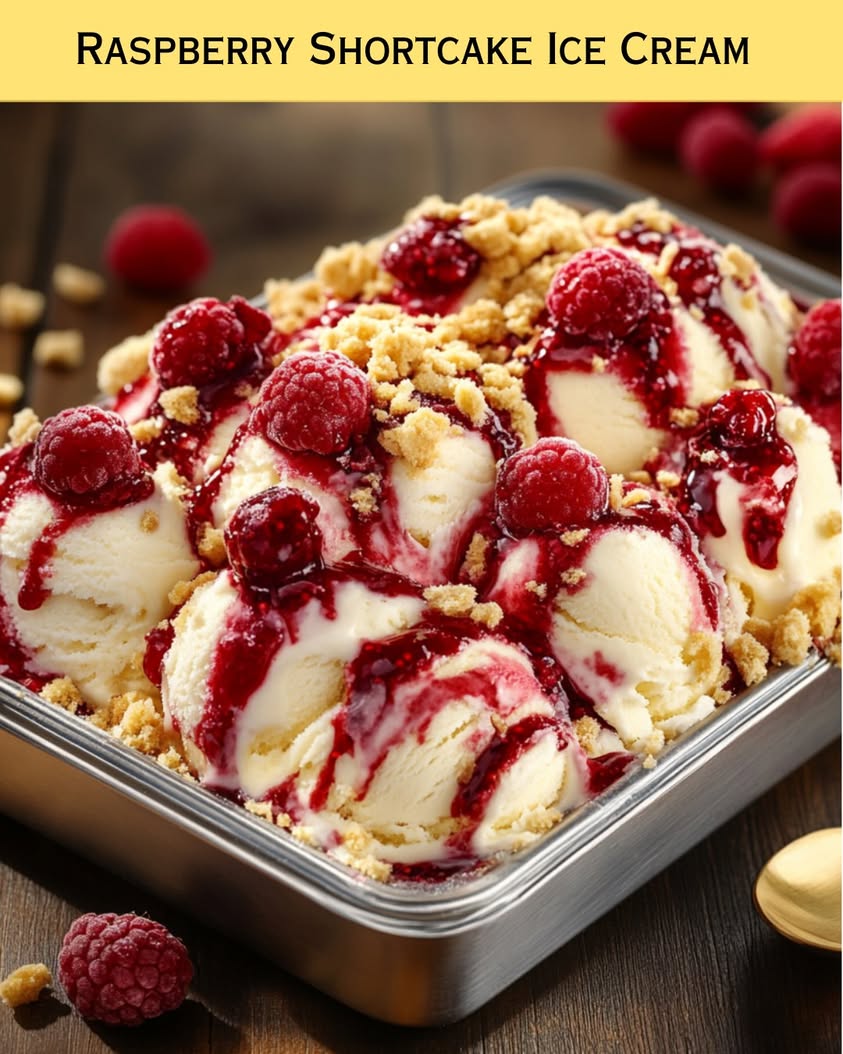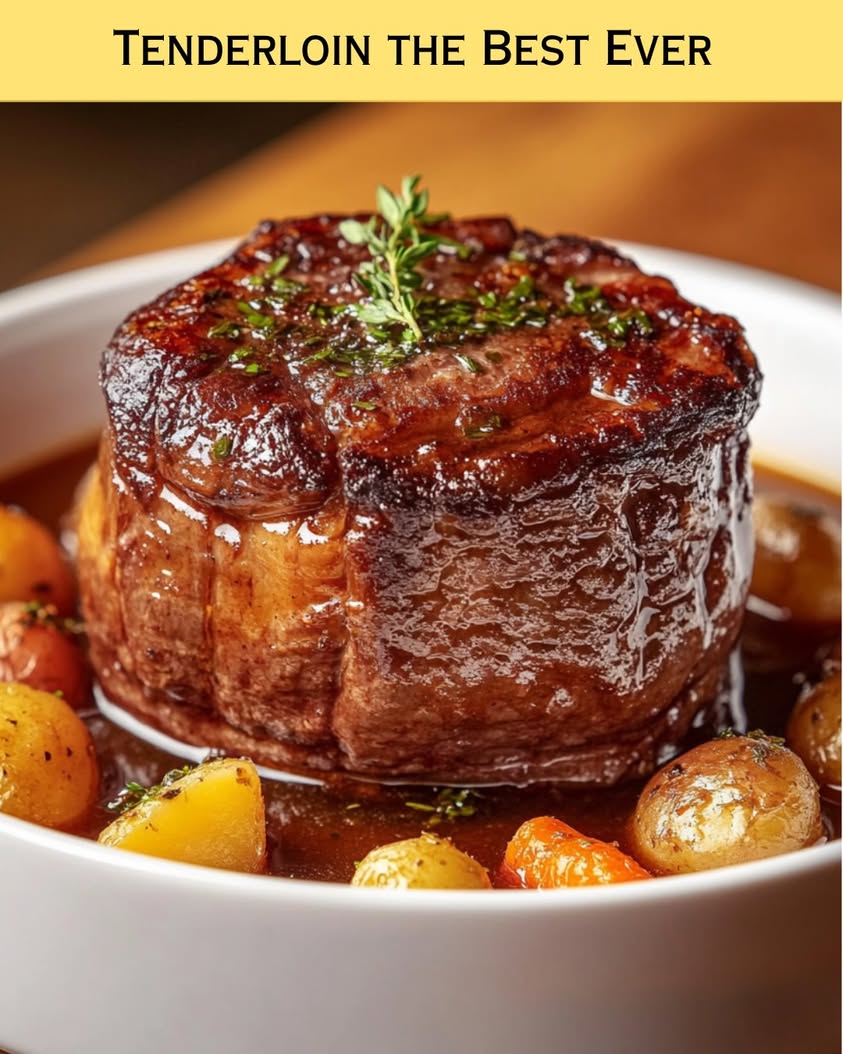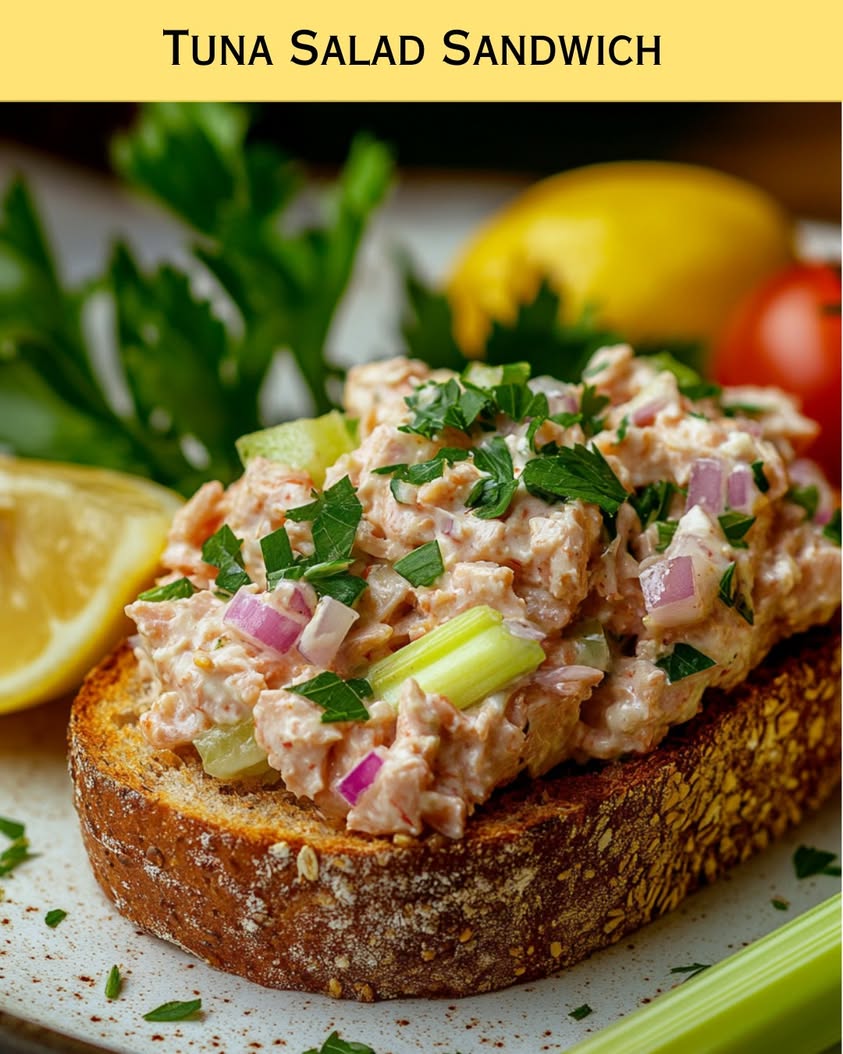Raspberry Shortcake Ice Cream: A Sweet Summer Delight
Raspberry Shortcake Ice Cream is the perfect treat to brighten up any summer day. Imagine a smooth and creamy vanilla base infused with the delightful tartness of fresh raspberries, all layered with buttery shortcake crumbles. This indulgent dessert combines the best of both worlds: the satisfying richness of ice cream and the nostalgic flavors of homemade shortcake, creating a heavenly experience with each spoonful.
With its vibrant pink hue and scattered bits of shortcake, this Raspberry Shortcake Ice Cream not only tastes incredible but also looks stunning. Whether served in a cone on a sunny afternoon or in a bowl at a family gathering, it’s sure to impress all ages. The refreshing flavor of raspberries, paired with the sweet creaminess, makes this a seasonal favorite that is hard to resist.
Quick Recipe Highlights
- Flavor Profile: A delightful mix of sweet and tart flavors, with every bite bringing out the freshness of ripe raspberries against a creamy backdrop.
- Texture: Soft and creamy ice cream punctuated with crunchy yet delicate shortcake pieces, giving a wonderful mouthfeel that’s both refreshing and satisfying.
- Aroma: The sweet, fruity aroma of raspberries combined with hints of vanilla creates an inviting scent that makes this dessert irresistible.
- Visual Appeal: A beautiful swirl of pink and white intertwined with golden shortcake pieces, this ice cream is as pleasing to the eyes as it is to the palate.
- Skill Level Needed: This recipe is easy to follow, making it perfect for beginners or those looking to impress guests without too much fuss.
- Special Equipment: An ice cream maker is essential for achieving that creamy texture, while a blender helps puree the raspberries smoothly.
Recipe Overview
- Difficulty Level: Easy enough for beginners, this recipe only requires a few simple steps and basic kitchen equipment to create a delicious and impressive dessert.
- Category: This delectable treat falls under desserts, making it a perfect addition to summer picnics, barbecues, or family gatherings.
- Cuisine: Drawing inspiration from classic American desserts, particularly the beloved strawberry shortcake, this Raspberry Shortcake Ice Cream takes familiar flavors and reimagines them for a frozen delight.
- Cost: The ingredients are fairly economical, with fresh raspberries and basic pantry staples making it a budget-friendly treat.
- Season: Best enjoyed in the warm months when raspberries are in season, this recipe showcases the best summer produce.
- Occasion: Whether for casual get-togethers, birthday parties, or a special family dinner, this ice cream serves as a festive standalone dessert.
Why You’ll Love This Recipe
This Raspberry Shortcake Ice Cream is truly a delight for the senses. The sweet and tangy raspberry flavor pairs perfectly with the creamy vanilla base, making every bite feel like a burst of summer. The shortcake crumbles add a delightful texture, transforming a simple ice cream into a gourmet treat. The smoothness of the ice cream, combined with the slight crunch from the cake pieces, perfectly balances the overall experience, making it one you’ll want to indulge in over and over again.
Convenience is another reason to fall in love with this recipe. The preparation is straightforward and doesn’t require advanced culinary skills. You can whip this up in a little over half an hour, which means you can enjoy a delicious, homemade dessert without spending the entire day in the kitchen. This Raspberry Shortcake Ice Cream can easily be made ahead of time, allowing you to have it on hand for unexpected guests or last-minute cravings.
Not only is this dessert a treat for your taste buds, but it also presents some nutritional benefits. Raspberries are rich in vitamins and antioxidants, which can contribute to your overall health. The ice cream allows you to enjoy the goodness of fruit while still indulging in a sweet treat. It’s a wonderful way to incorporate fruits into your diet, especially for those who might not typically reach for fresh produce.
Socially, this ice cream serves as a fantastic conversation starter. Share it at gatherings, and watch as friends and family rave about this delightful twist on a classic dessert. It’s perfect for both kids and adults, making it an excellent choice for any demographics, encouraging interactions and memories over shared servings.
Lastly, the cost-effectiveness of this recipe makes it a go-to choice for any occasion. With a few accessible ingredients, you’ll be able to serve a homemade, indulgent dessert that rivals any store-bought option. Plus, the satisfaction of creating your own delicious ice cream adds to the enjoyment. When you combine simplicity, flavor, and affordability, it’s hard to find a reason not to make this Raspberry Shortcake Ice Cream.
Historical Background and Cultural Significance
The origins of shortcake can be traced back to the 16th century in Europe, primarily thought to be a British creation. Initially made as a simple biscuit-like cake, it evolved over time. By the 19th century, Americans began to adopt and adapt the recipe, often incorporating local fruits into the dessert. Raspberries, particularly, became popular due to their abundance in many regions of the United States, paving the way for the fusion of these two classic desserts.
In American culture, shortcake serves as a nostalgic reminder of summer gatherings, family picnics, and backyard parties. It has become a staple at Independence Day celebrations and is synonymous with summertime. The adaptability of shortcake has allowed it to take on various forms, inspiring innovations like this Raspberry Shortcake Ice Cream that blend tradition with modern flair.
The progression of recipes reflects changes in culinary trends and tastes. As ice cream gained popularity in America in the 18th and 19th centuries, inventive cooks began to experiment by merging cakes and frozen desserts, leading to delightful confections like this. Raspberry Shortcake Ice Cream exemplifies the evolution of American dessert culture, proving that creativity knows no bounds in the kitchen.
Regional variations of this recipe also highlight its versatility. Different fruits can easily be substituted based on what’s in season or locally available. For example, peaches or strawberries can be used to create similar flavors while maintaining the essence of the classic shortcake dessert. This adaptability is what keeps the tradition alive, allowing families to pass down their own versions through generations.
Ingredient Deep Dive
Raspberries
Raspberries have a rich history, with their origins dating back over 2000 years. Initially found in regions of Europe and North America, they have grown wild before being cultivated for commercial purposes. This berry is not only delicious but also packed with antioxidants, vitamins C and K, and dietary fiber, making them a great addition to any dessert.
When selecting raspberries, ensure they are plump, shiny, and free from mushiness. They should also give off a sweet fragrance, indicating they are ripe. Store fresh raspberries in the refrigerator but aim to consume them within a few days as they can spoil quickly. If you’re looking for substitutes, blueberries or blackberries can work beautifully in this recipe, providing similar flavors and textures.
Shortcake
The historical significance of shortcake is notable in American culinary traditions. Originally a simple, sweetened bread-like cake, it has evolved into a more biscuit-like texture with the addition of rich cream and butter. This makes shortcake a delightful companion to sweet fruits, especially in pies and frozen desserts.
For selection, look for shortcakes that are light, fluffy, and buttery, ideally baked fresh for the best texture and moisture. They can be stored at room temperature for a day or two, but longer storage should be in the refrigerator. If substitutes are necessary, consider using pound cake or even cookies like ladyfingers for a creative twist in your Raspberry Shortcake Ice Cream.
Common Mistakes to Avoid
- Over-churning the ice cream can create an icy texture instead of the desired creamy, soft consistency.
- Using overly ripe or damaged raspberries can lead to a mushy texture and undesirable flavor.
- Not allowing the components to chill properly before mixing may result in a less smooth final product.
- Forgetting to incorporate the shortcake mixture evenly can leave you with uneven bites, missing the delightful crunch.
- Skipping the blending process can result in large raspberry chunks, which may not appeal to everyone.
- Neglecting to taste and adjust sweetness levels could lead to a too-sweet or too-tart dessert.
- Using non-fresh ingredients, like stale shortcake, can undermine the overall flavor quality of the ice cream.
- Not storing the ice cream properly can lead to freezer burn and changes in flavor and texture.
- Failing to let the ice cream soften at room temperature before serving can make it difficult to scoop.
- Assuming a single layer of flavor distribution ensures uniformity when layering is key for the best experience.
Essential Techniques
Blending Raspberries
Blending raspberries is crucial for achieving a smooth texture in your ice cream. It allows for a uniform flavor distribution without large, distracting pieces. To master this technique, pulse the berries gently and stop when a purée forms. Over-blending can cause the seeds to break down further, leading to gritty ice cream rather than a smooth blend. Look for a consistency that is fluid but not watered down; this will ensure a rich flavor throughout.
Churning Ice Cream
Churning ice cream is equally important for its texture. This process incorporates air into the mixture, resulting in a light and airy dessert. Use an ice cream maker, and follow the manufacturer’s instructions for timing. Common pitfalls include churning for too long, causing crystal formation, or too little, resulting in a dense texture. The ice cream should thicken and expand, doubling in volume and feeling soft to the touch upon completion.
Pro Tips for Perfect Raspberry Shortcake Ice Cream
1. Always use fresh, ripe raspberries for optimal flavor. They bring the berry essence that makes this ice cream sing.
2. Consider chillings all your ingredients in advance to keep the ice cream mix cold, promoting a smoother consistency.
3. Adjust the sugar based on your taste, and balance with the natural tartness of raspberries to create a harmonious blend.
4. For an extra layer of flavor, add a splash of lemon juice to the raspberry purée for a zesty twist.
5. Ensure your ice cream maker bowl is fully frozen before use — this helps achieve the desired creamy texture efficiently.
6. Allow your ice cream to soften for about 5-10 minutes at room temperature before scooping for easier serving.
7. Consider adding a splash of vanilla extract to complement the raspberries, enhancing the overall flavor profile.
8. Store the ice cream in a sealed container to prevent freezer burn and maintain freshness.
Variations and Adaptations
Feel free to experiment with various fruits to give your Raspberry Shortcake Ice Cream a personal twist. Check out seasonal variations; for instance, using fresh peaches in late summer or strawberries in spring can provide delightful results. If you’re looking for dietary adaptations, this recipe can easily be made vegan by using coconut cream or almond milk for the base and omitting the shortcake or opting for a dairy-free version.
Flavor variations can include adding crushed fudge or chocolate swirls for a decadent twist or a sprinkle of lemon zest for additional brightness. You can also modify the texture by blending the shortcake more finely if preferred. For presentation, serve in unique dishes with colorful garnishes, such as edible flowers or mint leaves, to elevate its appeal.
Serving and Presentation Guide
Presenting your Raspberry Shortcake Ice Cream beautifully enhances the overall experience. Consider plating techniques that highlight the swirls of pink and cream. Scoop the ice cream into clear dishes to showcase the vibrant colors. Garnishing ideas include dollops of whipped cream, a drizzle of berry sauce, or crumbled shortcake on top to echo the flavors within.
Traditional accompaniments like fresh raspberries and mint leaves complement the presentation splendidly. For a modern twist, consider serving the ice cream with a soft, warm biscuit or a slice of pound cake on the side. Temperature considerations are crucial; ensure the ice cream is at the right softness for scooping while keeping everything cold in your presentation so it maintains its form.
Portion control is also important; serve in small, elegant dishes to encourage tasting rather than over-indulging, thus enhancing the dining experience.
Wine and Beverage Pairing
Raspberry Shortcake Ice Cream works beautifully with a variety of beverages. For a classic pairing, consider a crisp Rosé or a sparkling white wine that will complement the fruit’s acidity without overpowering its fresh taste. These light options enhance the flavors of the dessert while bringing out the rich notes of the ice cream.
For non-alcoholic alternatives, serve alongside iced herbal teas, like hibiscus or mint, which echo the freshness of the dessert. Additionally, a light lemonade can cut through the richness, providing a refreshing balance. If coffee or tea is preferred, a light roast or fruity herbal blend would work best, marrying well with the dessert’s sweetness while offering a unique palate experience.
Storage and Shelf Life
Storing your Raspberry Shortcake Ice Cream properly will ensure it remains fresh and flavorful. Use an airtight container for maximum preservation, ensuring no air can escape and cause freezer burn. The ice cream should be kept at a consistent freezer temperature to maintain its creamy consistency.
Signs of spoilage include off-smells, ice crystals forming on the surface, or a change in color. If these occur, it’s best to discard the product. For optimal quality, consume within 2-3 weeks. When it comes to reheating, avoid it altogether; instead, allow the ice cream to soften in the fridge for a more manageable texture before scooping.
If you’re looking to freeze excess ice cream longer, consider dividing it into portable, single-serving sizes, keeping in mind they should be well-wrapped to minimize exposure to air and temperature fluctuations.
Make Ahead Strategies
Making your Raspberry Shortcake Ice Cream ahead of time allows for stress-free entertaining. Prepare the raspberry fruit base and shortcake crumbles a day in advance, storing them separately to maintain their respective textures and flavors. This makes the final assembly quick and simple.
The prep timeline can include making the base one day, letting it churn and freeze overnight. When ready to serve, simply allow the ice cream to soften slightly before scooping for the best results. It’s essential to assess the quality impact post-freezing and make sure ingredients haven’t compromised, particularly for the shortcake, which can become soggy if prepared too far in advance.
Finally, consider adding fresh elements, like additional raspberries or a sprig of mint, just before serving to enhance the fresh flavors and appeal of your ice cream.
Scaling Instructions
Scaling the Raspberry Shortcake Ice Cream recipe is uncomplicated. If you’d like to halve it, simply reduce each ingredient by 50%, ensuring you adjust your cooking times as necessary. When doubling or tripling, it’s vital to ensure that your ice cream maker bowl can handle the larger volume.
Equipment adjustments may include using larger bowls for mixing and blending to accommodate increased amounts. Timing modifications might involve extending the freeze time depending on how much you’re preparing. Pay special attention to the texture during each batch, adjusting a bit more if needed, as larger quantities can require slightly longer churning times.
Finally, consider that storage may also need to be addressed, especially if you’re making larger quantities, to ensure everything stays fresh.
Nutritional Deep Dive
A macro breakdown of Raspberry Shortcake Ice Cream reveals a delightful balance of carbohydrates from the shortcake, essential fats from the cream, and antioxidants provided by the raspberries. This dessert can fit into a balanced diet, offering satisfaction alongside fruit nutrients.
In terms of micronutrients, raspberries are packed with vitamin C and manganese, while the ice cream base offers calcium from dairy. Health benefits include supporting immune function and skin health.
Dietary considerations are essential for those mindful of sugar intake, with an analysis showing that it can be adjusted without sacrificing flavor. It’s also crucial to analyze portions; a single scoop can provide a fulfilling treat without excessive indulgence, supporting weight management goals effectively.
Dietary Adaptations
1. Gluten-free: Use a gluten-free flour blend for the shortcake and ensure all ingredients are labeled gluten-free.
2. Dairy-free: Substitute the cream and milk with coconut milk or almond milk, and use a non-dairy shortcake recipe.
3. Vegan: Similar to dairy-free adaptations, use plant-based alternatives for all dairy ingredients.
4. Low-carb: Experiment with almond flour for the shortcake and use sugar alternatives to create a low-carb version.
5. Keto: Focus on recreating the base with low-carb sweeteners and ensure all components fit within your macros.
6. Paleo: Replace conventional sugars with natural sweeteners like honey, and omit any processed items in the recipe.
7. Low-FODMAP: Be cautious with portion sizes of raspberries and consider using lactose-free dairy options.
8. Other specific diets: Adapt ingredient selections based on dietary preferences while ensuring the core flavors remain true to the original recipe.
Troubleshooting Guide
When encountering texture issues, the most likely causes might be incorrect churning time or ingredients. Over-churning can create an icy texture, while under-churning may lead to a dense product. Balance and process as needed to achieve your desired result.
Flavor balance problems can arise if any ingredient is neglected. Always taste as you go, especially with raspberries, to adjust sweetness. Ingredient substitutions, while useful, require caution; always select options with similar characteristics.
Temperature issues often present themselves during freezing or serving. Ensure the ice cream is properly frozen before serving to avoid soupy consistency, and soften it gradually at room temperature for optimal scooping.
Common equipment challenges can often be solved by identifying if your ice cream maker is functioning correctly, ensuring it’s fully frozen before use. Timing concerns should always be noted; invest a few minutes in prepping your base to make all the difference in the finished product.
Recipe Success Stories
Community feedback on Raspberry Shortcake Ice Cream has been overwhelmingly positive. Families rave about how it has become a tradition at summer barbecues, with children and adults alike asking for seconds and thirds. Many have shared their unique variations, adding different fruits or even chocolate swirls, which elevate the classic recipe to new heights.
Variation successes show how this recipe can be personalized. One reader successfully used leftover shortcake from a gathering and paired it with mixed berries, creating a spin on the original that delighted her guests. Others engage in the photography aspect of food, sharing vibrant images of their creations on social media.
Photography tips have also been shared, highlighting natural lighting and using colorful backgrounds to enhance the visual appeal of the final dish. Readers are eager to showcase their creations, inspiring others to try their hands at this delightful dessert.
Frequently Asked Questions
Can I substitute different fruits in this recipe?
Absolutely! This recipe is versatile. You can use strawberries, blueberries, or even peaches to create delightful variations of this ice cream, maintaining the essence of the shortcake.
How long can I store Raspberry Shortcake Ice Cream?
It’s best to consume it within 2-3 weeks for optimal flavor and freshness. Store in an airtight container to keep it from freezer burn.
Can I make this recipe without an ice cream maker?
Yes, you can make a no-churn version by whipping heavy cream to stiff peaks, then folding in the other ingredients slowly before freezing.
Is there a way to make this dairy-free?
Yes, by using coconut milk or almond milk as a base, you can enjoy this dessert without dairy while still keeping the creamy texture.
How do I achieve a smoother texture in the ice cream?
Make sure to blend the raspberries thoroughly and churn the mixture until it has thickened adequately, which incorporates air for a creamier consistency.
What if my ice cream is too hard to scoop?
Let it sit at room temperature for about 5-10 minutes or until it softens slightly before trying to scoop.
Can I add alcohol to this recipe?
Yes, adding a splash of raspberry liqueur can enhance the flavor profile and give a unique twist to your ice cream, keeping the texture intact.
What is the best way to serve this ice cream?
To showcase its beautiful colors, serve in clear bowls with fresh raspberries and a sprig of mint on top for added elegance.
How can I make this ice cream an adult dessert?
Consider incorporating some flavored liqueurs or even blending in some chocolate fudge for a more grown-up treat.
Is there a way to make it less sweet?
Yes, you can reduce the sugar content and maximize the tartness of the raspberries for a refreshing twist.
Additional Resources
Explore related recipes that include variations of homemade ice creams and frozen desserts, providing new ideas and inspiration for your culinary adventures. Look into technique guides on making the perfect ice cream or dessert bases to elevate all your sweet creations. Further ingredient information can enhance your knowledge of fruits and their nutritional profiles, making you a savvy cook.
Hybrid desserts are trendy, and our equipment recommendations can assist you in selecting the best tools for creating different kinds of ice creams, sorbets, and frozen delights. Finally, explore seasonal variations that highlight fresh fruits and elements to transform your classic recipes into current favorites.
Join the Conversation
We would love to hear your experiences with Raspberry Shortcake Ice Cream! Share your creations on social media, including any imaginative twists you’ve added. Remember to engage with others, taste testing, and exploring new variations together. Recipe reviews and community engagement create a wonderful camaraderie in the kitchen, inspiring creativity among everyone who loves to cook and bake.
The Recipe
Raspberry Shortcake Ice Cream
Serves: 6
Prep Time: 20 mins
Cook Time: 15 mins
Total Time: 35 mins
Kitchen Equipment Needed
- Ice cream maker
- Blender
- Mixing bowls
- Spatula
- Airtight storage container
Ingredients
- 2 cups fresh raspberries
- 1 cup granulated sugar (adjust to taste)
- 2 cups heavy cream
- 1 cup whole milk
- 1 tbsp vanilla extract
- 2 cups crumbled shortcake
Directions
- In a blender, purée the raspberries and ½ cup of sugar until smooth. Set aside.
- In a mixing bowl, whisk together heavy cream, milk, remaining sugar, and vanilla until well combined.
- Gently fold the raspberry purée into the cream mixture until swirls are formed.
- Churn the mixture in your ice cream maker according to the manufacturer’s instructions.
- During the last few minutes of churning, fold in crumbled shortcake until evenly distributed.
- Transfer the mixture to an airtight container and freeze for at least 4 hours until firm.
- Before serving, allow the ice cream to soften at room temperature for a few minutes.
Recipe Notes
- Fresh berries will yield the best flavor, but frozen can work if fresh is not available.
- Shortcake can be made ahead of time and crumbled just before mixing.
- Adjust sugar levels based on your taste preferences and the tartness of the raspberries.




